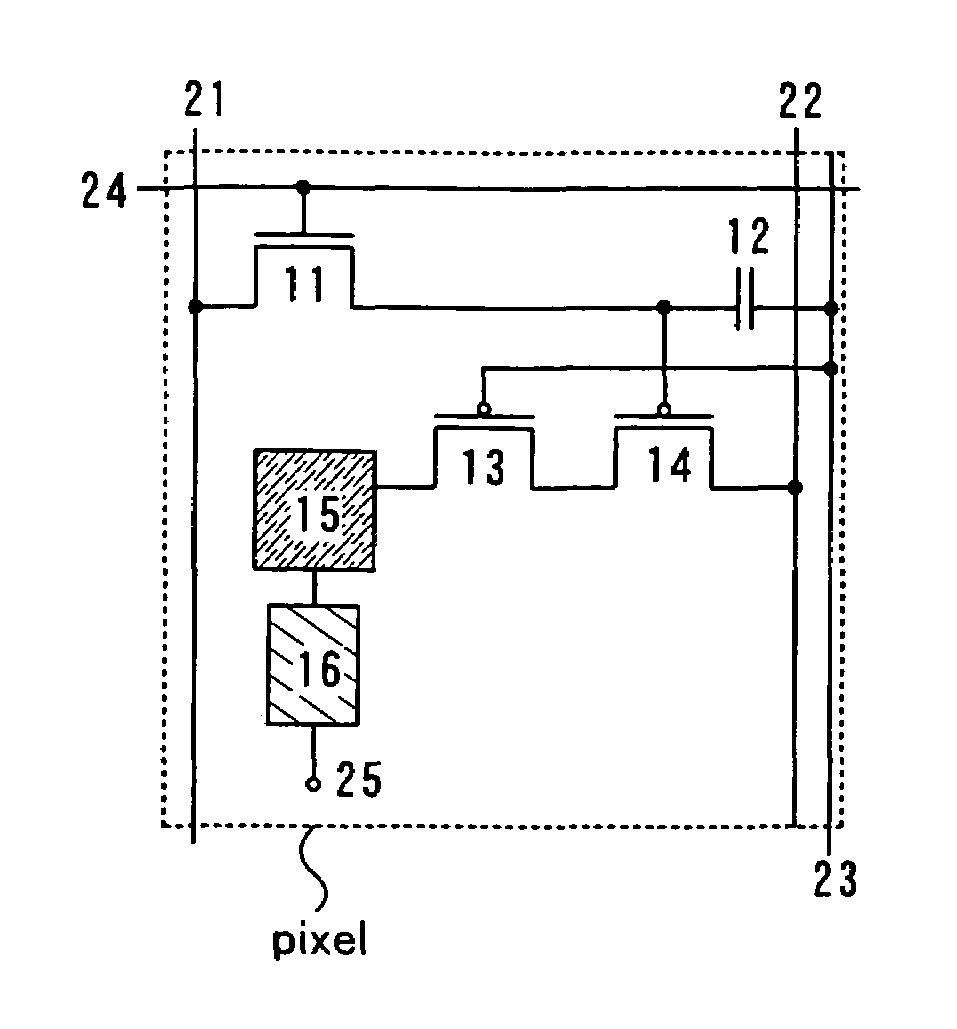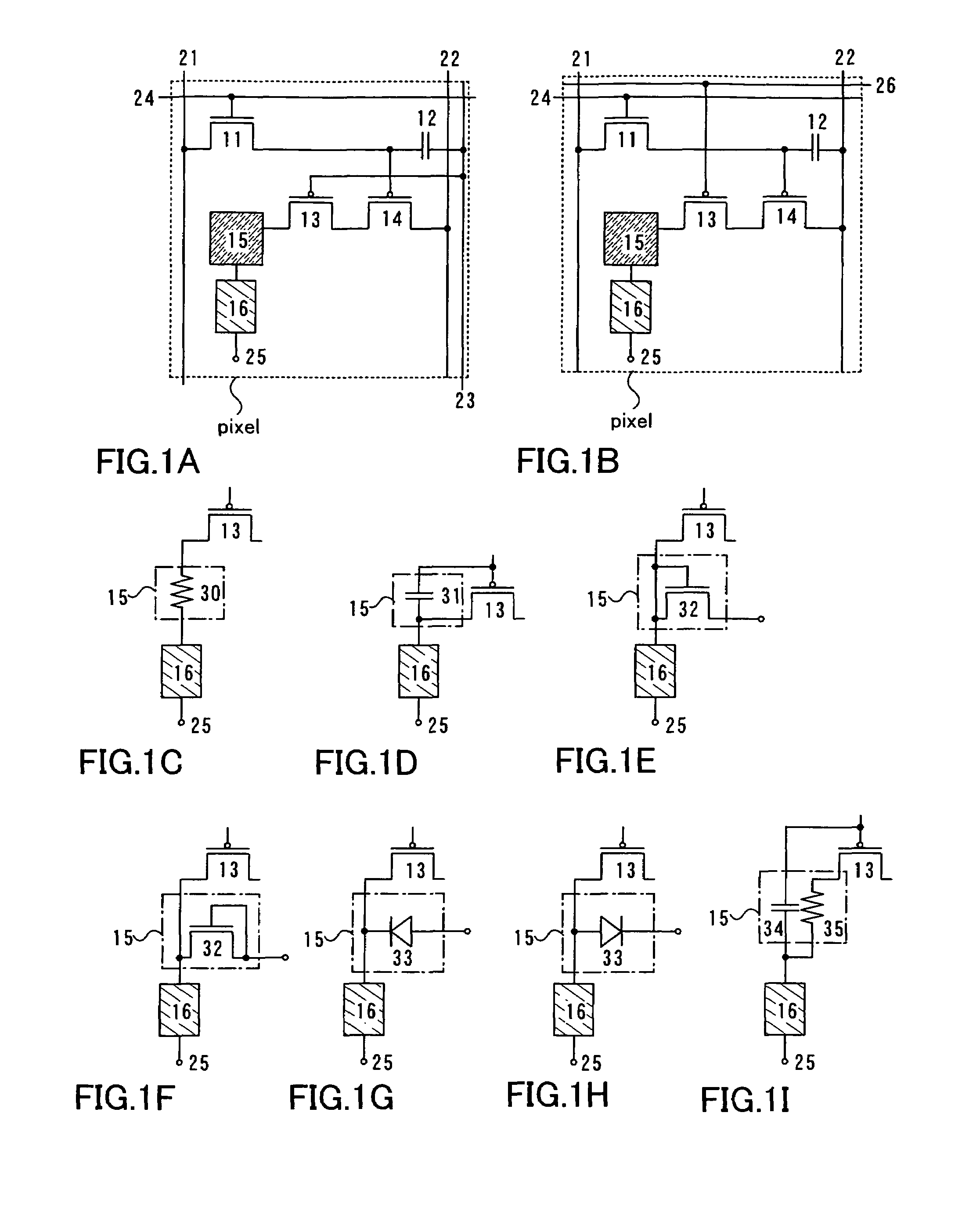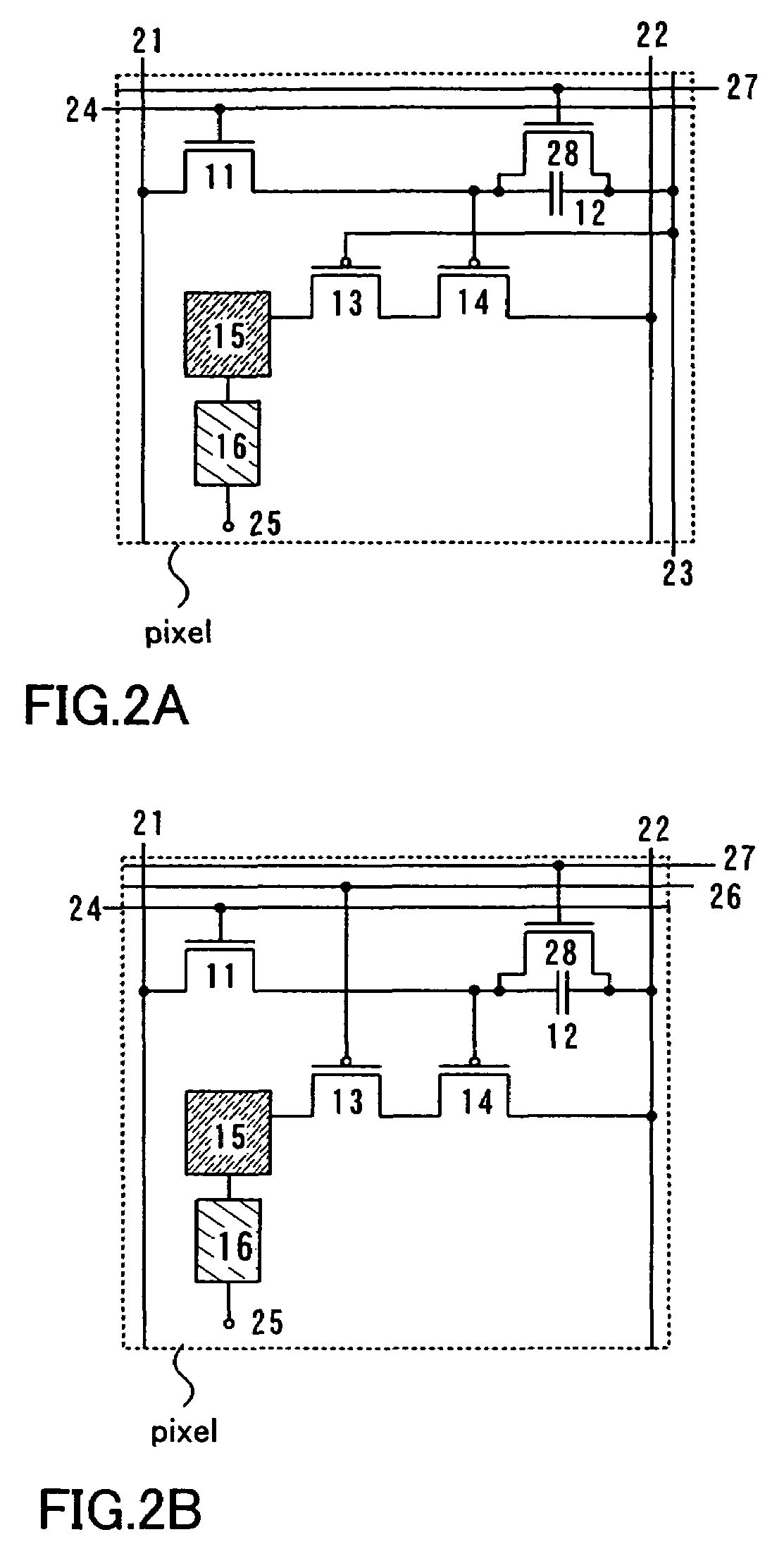Semiconductor device
a semiconductor and device technology, applied in static indicating devices, instruments, optics, etc., can solve the problems of electrostatic discharge damage easily induced, degradation or destruction of a semiconductor element connected damage to the pixel electrode, so as to increase the capacitance of the capacitor element, reduce the luminance of the light emitting element due to variations in the characteristics of driving transistors, and improve image quality
- Summary
- Abstract
- Description
- Claims
- Application Information
AI Technical Summary
Benefits of technology
Problems solved by technology
Method used
Image
Examples
embodiment mode 1
[Embodiment Mode 1]
[0043]A circuit configuration of a pixel included in the semiconductor device of the invention is described with reference to FIGS. 1A to 11. A pixel shown in FIG. 1A comprises a signal line 21 and power supply lines 22 and 23 arranged in columns and a scan line 24 arranged in rows. The pixel also comprises a switching transistor 11 (hereinafter referred to as a transistor 11), a driving transistor 13 (hereinafter referred to as a transistor 13), a current controlling transistor 14 (hereinafter referred to as a transistor 14), a protection means 15, and a light emitting element 16. One electrode of the light emitting element 16 is connected to a counter power supply 25.
[0044]A pixel shown in FIG. 1B has the same configuration as that in FIG. 1A, except that a gate electrode of the transistor 13 is connected to a power supply line 26 arranged in rows. That is, the pixels shown in FIGS. 1A and 1B show the same equivalent circuit diagram. However, in the case where t...
embodiment mode 2
[Embodiment Mode 2]
[0056]A circuit configuration of a pixel included in the semiconductor device of the invention is described with reference to FIGS. 2A and 2B. A pixel shown in FIG. 2A comprises the signal line 21 and the power supply lines 22 and 23 arranged in columns, and the scan line 24 and a scan line 27 arranged in rows. The pixel further comprises the transistor 11, the transistor 13, the transistor 14, an erasing transistor 28 (hereinafter referred to as a transistor 28), a capacitor element 12, the protection means 15, and the light emitting element 16. One electrode of the light emitting element 16 is connected to the counter power supply 25.
[0057]The pixel shown in FIG. 2A has the same configuration as that shown in FIG. 1A, except that the transistor 28 and the scan line 27 are additionally provided, therefore, detailed description thereof is omitted herein. Similarly, a pixel shown in FIG. 2B has the same configuration as that shown in FIG. 1B, except that the transi...
embodiment mode 3
[Embodiment Mode 3]
[0060]A light emitting element has a structure in which an electro luminescent layer is sandwiched between a pair of electrodes. More specifically, an electro luminescent layer is formed on a patterned first conductive layer (first electrode), and a second conductive layer (second electrode) is formed so as to cover the whole surface of the electro luminescent layer. In this case, heat treatment is preferably performed on the second conductive layer formed over the electro luminescent layer in order to lower the resistance. However, the electro luminescent layer has a low heat resistance and can not withstand heat treatment at a high temperature. Therefore, due to different resistance values, a voltage applied between a pair of electrodes may differ between in the edges and the center of the light emitting element, which may result in degraded image quality and increased power consumption. In view of this problem, an auxiliary conductive layer (wiring) is connecte...
PUM
 Login to View More
Login to View More Abstract
Description
Claims
Application Information
 Login to View More
Login to View More - R&D
- Intellectual Property
- Life Sciences
- Materials
- Tech Scout
- Unparalleled Data Quality
- Higher Quality Content
- 60% Fewer Hallucinations
Browse by: Latest US Patents, China's latest patents, Technical Efficacy Thesaurus, Application Domain, Technology Topic, Popular Technical Reports.
© 2025 PatSnap. All rights reserved.Legal|Privacy policy|Modern Slavery Act Transparency Statement|Sitemap|About US| Contact US: help@patsnap.com



